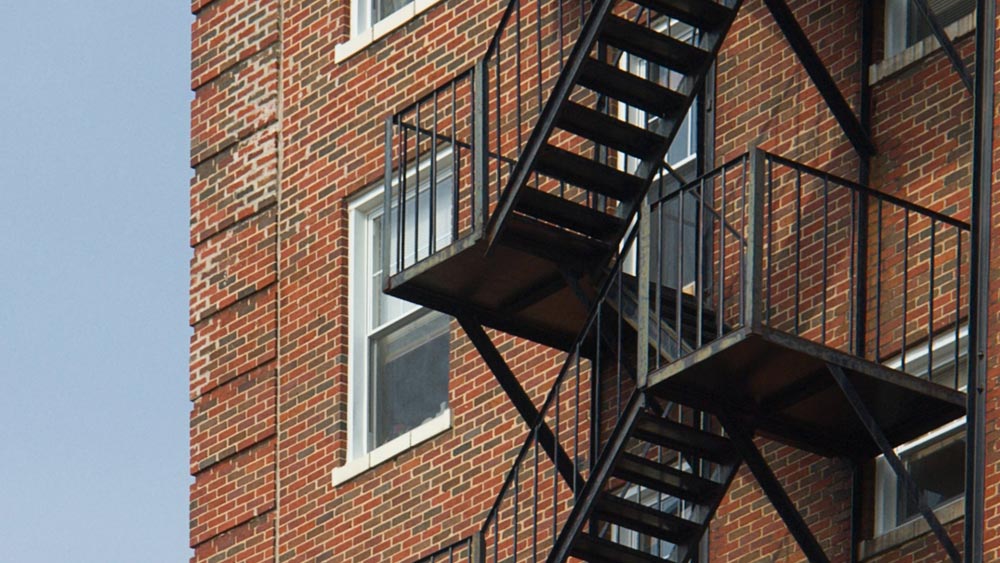
In urban environments, fire escape stairs are a critical safety feature—but also one of the most neglected parts of a building’s exterior. Over time, these metal structures collect grease, bird droppings, grime, rust, moss, and even trash, making them slippery and unsightly. Regular power washing is not only a matter of curb appeal—it’s essential for safety and code compliance. ✅
In this article, we’ll cover how to safely and effectively pressure wash fire escape stairs, especially in city environments where access and runoff can be challenging. Let’s get into it! 🧽🏙️
🔍 Why Cleaning Fire Escape Stairs Is So Important
Fire escape stairs are usually made of metal grating or steel platforms mounted along the exterior of buildings. These structures are prone to:
- Accumulating dirt, oils, and airborne pollutants
- Rust and corrosion from moisture and pollutants
- Becoming slippery due to moss, mildew, or bird droppings
- Obstructed or unsafe egress in emergencies
If not cleaned regularly, they can pose serious liability and safety risks for property owners and tenants.
🧰 Equipment You’ll Need
- Pressure washer (2,000–3,000 PSI)
- 15° or 25° nozzle tip
- Biodegradable degreaser or rust remover
- Telescoping wand or scaffold for access
- Safety harness (if working above ground level)
- Collection tray or vacuum system (for urban runoff control)
- Rust-resistant paint or sealant (optional for aftercare)
💡 Always check local ordinances for water runoff regulations—especially in cities where gray water disposal is strictly enforced.
Browse Amazon Here For Popular Pressure Washers And Accessories
🧼 Step-by-Step: How to Power Wash Urban Fire Escape Stairs
1. Clear the Area
Start by removing any trash, leaves, or loose debris from the stairs and nearby ledges. If there’s grease or sticky buildup (often from nearby kitchens), apply a degreaser and let it soak.
2. Pre-Treat Rust and Stains
Use a rust remover or concrete/metal-safe cleaner and scrub problem areas with a stiff brush. Let it dwell for 10–15 minutes before pressure washing.
3. Set Up Safe Access
If the fire escape is multi-story, make sure you’re working from a secure platform or scaffold. Never attempt to clean an elevated fire escape from a ladder. A safety harness and anchor point are strongly recommended for elevated work. 🧗♂️
4. Start from the Top
Begin cleaning at the highest level and work your way down. This avoids dirty runoff falling onto areas you’ve already cleaned.
5. Use a Moderate Angle and Keep Moving
Use a 15° or 25° tip to provide strong but controlled cleaning. Keep the nozzle about 12 inches away from the metal to avoid damage. Move in consistent, overlapping strokes and don’t linger in one spot.
6. Rinse and Repeat
After each section, rinse off all residue. If you used a degreaser or rust cleaner, follow with a clean water rinse to neutralize the surface.
7. Check Drainage
Make sure runoff doesn’t pool on ledges, rooftops, or sidewalks. In city settings, using a water reclamation mat or vacuum attachment is often required to keep things street-legal.
⚠️ Common Mistakes to Avoid
❌ Using too much pressure on old or rusted staircases (can weaken the metal)
❌ Ignoring city codes around wastewater collection
❌ Pressure washing without a clear exit strategy for the water runoff
❌ Cleaning in high-traffic pedestrian areas during peak hours
❌ Forgetting to check structural stability—don’t clean a staircase that feels unstable!
🧽 Aftercare and Maintenance
After cleaning, consider applying a rust-resistant paint or sealant to extend the life of the fire escape. This is especially important in coastal or high-pollution areas where corrosion happens quickly.
Recommended maintenance schedule:
- Quarterly cleaning in greasy or high-pollution zones (near restaurants or factories)
- Bi-annual cleaning in general city environments
- Immediate cleaning if fire code violations are issued
🔧 When to Call a Pro
If your fire escape:
- Is more than 2 stories high
- Has visible corrosion, warping, or structural damage
- Requires scaffolding or permits for access
- Is adjacent to electrical boxes, signage, or tight alleyways
…it’s best to hire a professional who’s certified for elevated structure cleaning and OSHA safety.
🏢 Final Thoughts
Keeping fire escape stairs clean with pressure washing isn’t just about looks—it’s about life safety, code compliance, and building value. With the right tools, settings, and awareness of city regulations, you can clean these metal workhorses without putting tenants or your building at risk.
Stay safe, stay clean, and keep those emergency exits ready for anything. 🚿🔥🏙️
Browse Amazon Here For Popular Pressure Washers And Accessories



